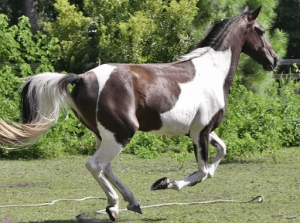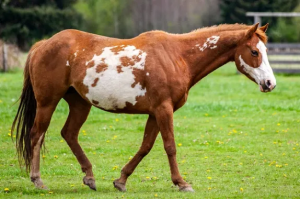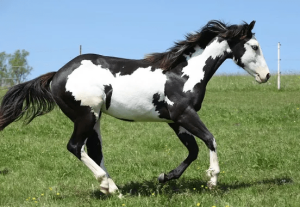The Magnificence of Paint Horses: Colors, Patterns, and Rich Heritage.
Have you ever marveled at the captivating diversity among Paint horses? Their striking array of equine colors, each adorned with unique patterns and placements, presents a mesmerizing tapestry that distinguishes these horses from the rest. Are these designs accidental, products of genetics, or a blend of both? Let’s embark on a journey to unravel the intriguing world of Paint horses.

Source: horseracingsense.com
Distinguished by a blend of white and various equine colors, Paint horse coats aren’t merely colors; they’re masterpieces. Each horse embodies a unique canvas with color patches appearing in different shapes, sizes, and positions. Three primary Paint horse patterns stand out: tobiano, overo, and tovero, showcasing nature’s creativity at its finest.

Image Credits: https://horseracingsense.com/
The legacy of the Paint Horse stretches back to ancient times, with historical accounts, art, and artifacts worldwide depicting horses with distinct color patterns similar to today’s Paint Horses. In North America, horses with paint-like markings were documented in various accounts. European explorers brought horses that interbred with the native populations, gradually giving rise to the distinctly patterned Paint Horse. These horses were celebrated for their strength, versatility, and, of course, their striking coloration.
Formal recognition and the establishment of the American Paint Horse Association (APHA) in 1965 marked a significant milestone for the breed. The APHA played a pivotal role in setting breed standards, fostering the breed’s promotion, and nurturing a vibrant community around Paint Horses. Today, the Paint Horse stands as a symbol of its ancestry’s rich tapestry and the equine world’s diverse spectrum.

Image Credits: Zuzule / Shutterstock.com
Paint Horses possess a base color coat like other horses, but a unique gene overlays white-colored hair, creating captivating spotting patterns. No two Paint horses share the same pattern; they can exhibit any combination of white and other equine colors. Three primary types of Paint patterns dominate:
1- Tobiano
The Tobiano pattern showcases large, solid-colored spots enveloping a white base. These spots, often symmetrical, highlight predominantly dark colors on the flanks and legs, while the head may display solid coloring or white facial markings like a star or blaze. Ranging from extensive solid colors to nearly all white, Tobiano patterns are widespread across various horse breeds.

Credits: aleigha blakley / Shutterstock.com
2- Overo
Inspired by the Spanish word meaning “like an egg,” Overo horses feature color with irregular white markings, primarily along the side or belly. Their solid-colored legs and distinct facial markings, resembling a broad blaze, define this pattern. Some Overos may possess one blue eye and distinct white markings on the legs, underbelly, and head.

Image Credits:Paula Cobleigh / Shutterstock.com
3- Tovero
Tovero patterns represent a combination of tobiano and overo coats, often seen as a hybrid cross between these patterns. Displaying more white in the face and chest areas, Toveros inherit traits from both parent patterns, manifesting blue eyes like overos but having distinct markings similar to tobianos.

Image Credits: Zuzule / Shutterstock.com
Paint Horses stand as living canvases, weaving tales of heritage and beauty through their captivating colors and intricate patterns. Their history, marked by an evolution intertwined with civilizations and cultures, underscores the timeless charm of these remarkable equines.
Paint horses embody an exquisite blend of history, resilience, and breathtaking patterns. Their story, spanning centuries, showcases the profound connection between humanity and these stunning equine masterpieces, reflecting a legacy of unparalleled beauty and unique individuality.
Also to read: 4 Interesting paint Horse facts




